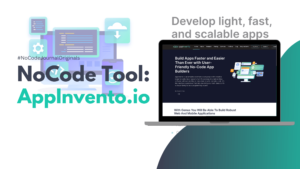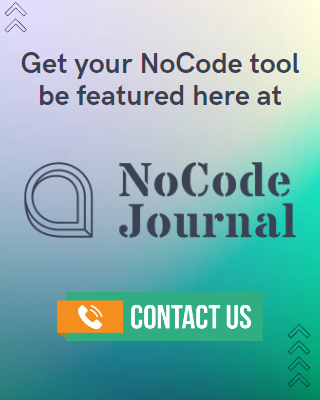Unleashing Business Agility The Essential Features Of A Low-Code Platform For Empowering Business Users
- Manish Balakrishnan
In today’s rapidly evolving business landscape, agility is the key to success. Organizations need to adapt quickly to changing market demands, seize new opportunities, and streamline processes to stay ahead of the competition. Traditional software development approaches often struggle to keep up with the pace required by modern businesses. This is where low-code platforms come into play, offering a revolutionary way for business users to actively participate in application development and customization without extensive coding knowledge. In this article, we will delve into the essential features that a low-code platform should offer to empower business users.
Table of Contents
ToggleI. Introduction to Low-Code Platforms
A. Definition and Concept
Low-code development platforms are a game-changer for businesses seeking to accelerate application delivery. These platforms provide a visual development environment with drag-and-drop components, pre-built templates, and reusable modules, significantly reducing the amount of hand-coding required.
B. Empowering Business Users
One of the primary goals of low-code platforms is to enable business users to actively contribute to the development process. By bridging the gap between IT and business take holders, these platforms empower users with domain expertise to directly participate in creating and modifying applications.
II. Core Features of a Low-Code Platform for Business Users
A. Intuitive Visual Interface
Drag-and-Drop Functionality: A user-friendly interface with drag-and-drop capabilities allows business users to design and modify applications visually. This eliminates the need for extensive coding knowledge, making the platform accessible to a broader audience.
WYSIWYG Editor: What-You-See-Is-What-You-Get(WYSIWYG) editors provide a real-time preview of the application’s appearance, allowing users to make immediate adjustments and see the results without the need for code compilation.
B. Seamless Integration Capabilities
Connectivity to External Systems: A robust low-code platform should facilitate seamless integration with existing systems and third-party applications. This allows business users to leverage data from various sources without depending on IT for integration support.
API Integration: The platform should support easy integration with application programming interfaces (APIs), enabling users to connect to a wide range of services and data repositories effortlessly.
C. Reusable Components and Templates
Component Library: A comprehensive library of pre-built components and widgets empowers business users to assemble applications quickly. These reusable elements save time and ensure consistency across different projects.
Template Repository: Access to a repository of templates for common business processes(e.g., approval workflows, data entry forms) enables users to kickstart development, reducing the time and effort required for application creation.
D. Collaboration and Workflow Management
Collaborative Development Environment: The platform should support collaborative development, allowing multiple users to work on the same project simultaneously. This fosters teamwork between IT and business users.
Version Control: Robust version control mechanisms help track changes, roll back to previous states, and manage the evolution of applications over time. This ensures stability and reliability in the development process.
E. Security and Compliance
Role-Based Access Control: Granular access controls based on roles and responsibilities ensure that business users only access and modify components within their domain. This enhances security and minimizes the risk of unauthorized changes.
Compliance Features: The platform should include features that facilitate compliance with industry regulations and standards, providing a secure environment for developing and deploying applications.
F. Mobile Responsiveness
Cross-Platform Compatibility: A low-code platform should enable the creation of applications that are responsive and compatible across various devices and screen sizes, ensuring a seamless user experience.
Native Mobile App Support: The ability to develop native mobile applications without extensive coding simplifies the process of reaching a wider audience through mobile platforms.
G. Analytics and Monitoring
Real-Time Monitoring: Business users should have access to real-time analytics and monitoring tools to track application performance, user engagement, and other key metrics.
Custom Reporting: The platform should support the creation of custom reports and dashboards, allowing business users to derive insights from application data without relying on specialized data analysts.
III. Benefits of Empowering Business Users with Low-Code Platforms
A. Accelerated Time-to-Market
By enabling business users to actively participate in the development process, low-code platforms significantly reduce the time it takes to bring applications from concept to production. This acceleration is crucial in today’s fast-paced business environment.
B. Enhanced Collaboration Between IT and Business
Low-code platforms break down the traditional barriers between IT and business departments. Collaboration becomes more seamless, with business users and IT professionals working together to achieve common goals.
C. Cost-Efficiency
The reduced reliance on professional developers for every aspect of application development translates into cost savings. Business users can handle routine modifications and updates, freeing up IT resources for more complex tasks.
D. Continuous Improvement
The iterative nature of low-code development allows for continuous improvement. Business users can quickly implement changes based on user feedback and evolving business requirements, ensuring that applications stay aligned with organizational needs.
IV. Challenges and Considerations
A. User Training and Adoption
While low-code platforms aim to be user-friendly, adequate training is crucial to ensure that business users can make the most of the platform’s features. A well-structured training program can mitigate challenges related to user adoption.
B. Scalability and Customization
Businesses should evaluate the scalability of a low-code platform to ensure it can handle the growing complexity and size of applications. Additionally, the platform should allow for custom coding when necessary, providing flexibility for more advanced users.
C. Vendor Support and Updates
Choosing are put able vendor with a commitment to ongoing support and updates is essential. Regular updates and improvements ensure that the platform remains aligned with evolving business needs and technological advancements.
V. Code Editing Tools: Elevating Low-Code Platforms to Peak Performance
In the dynamic landscape of software development, low-code platforms have emerged as a revolutionary force, empowering users to create applications with minimal coding expertise. To truly stand out and provide a distinct advantage over traditional development methods, a low-code platform must offer a suite of code editing tools that streamline and enhance the development process. In this article, we’ll explore the essential code editing tools that every low-code platform should integrate, ensuring accelerated code generation, robust testing, and seamless collaboration.
1. Automated Code Compilation
A. Swift Deployment
A top-tier low-code platform should incorporate automated code compilation tools that facilitate swift deployment of applications. This feature minimizes the time between code creation and its execution, ensuring a faster development lifecycle.
B. Real-Time Feedback
Immediate feedback on code compilation errors is crucial for developers, including those with limited coding experience. The platform should provide real-time alerts, highlighting errors and suggesting corrections to streamline the debugging process.
2. Debuggers
A. Visual Debugging Tools
In the low-code paradigm, debugging is a critical aspect of ensuring application reliability. A feature-rich low-code platform should include visual debugging tools that allow users to identify and resolve issues through an intuitive and user-friendly interface.
B. Breakpoint Management
Effective debugging requires the ability to set breakpoints in the code. The platform should offer breakpoint management tools, allowing developers to pause execution at specific points to inspect variables and assess the application’s state.
3. GitHub Integration
A. Version Control
Seamless integration with GitHub or other version control systems is essential for collaborative development. This feature ensures that changes made by different users are tracked, enabling easy collaboration and efficient management of the application’s codebase.
B. Branching and Merging
Advanced GitHub integration includes support for branching and merging, empowering development teams to work on different features simultaneously. This capability enhances collaboration, allowing multiple contributors to work on various aspects of the application without conflicts.
4.Database Management
A. Intuitive Data Modeling
A robust low-code platform should offer intuitive tools for data modeling, allowing users to define database schemas without delving into complex SQL queries. Visual interfaces for creating tables, relationships, and data structures simplify the database management process.
B. Seamless Database Integration
The platform should provide seamless integration with popular databases, enabling users to connect their applications to data repositories effortlessly. This integration should support both relational and non-relational databases to accommodate diverse application requirements.
5. Data Dictionaries
A. Centralized Data Definitions
A low-code platform should include data dictionaries that serve as a centralized repository for defining and documenting data structures. This ensures consistency across the application, making it easier for developers to understand and work with data entities.
B. Automated Documentation Generation
Automatically generated data dictionaries and API documentation streamline the documentation process. This feature ensures that developers and other stakeholders have up-to-date information about data structures and APIs, enhancing overall project transparency.
6.Automatically Generated API Documentation
A. Comprehensive API Documentation
APIs play a crucial role in integrating applications with external services. A low-code platform should automatically generate comprehensive API documentation, detailing end points, request/response formats, and authentication methods. This documentation enhances collaboration with external developers and accelerates integration processes.
B. Interactive Documentation
To further enhance user experience, the platform should provide interactive API documentation that allows developers to test API endpoints directly from the documentation. This facilitates rapid prototyping and validation of API functionality.
VI. Future Trends in Low-Code Development
A. AI and Machine Learning Integration
The integration of artificial intelligence (AI) and machine learning (ML) capabilities in to low-code platforms is an emerging trend. This will empower business users to create intelligent applications without in-depth knowledge of AI/ML algorithms.
B. Advanced Automation
Future low-code platforms are likely to incorporate advanced automation features, allowing for the automation of complex business processes. This will further enhance efficiency and reduce manual intervention in routine tasks.
Conclusion
In conclusion, low-code platforms have emerged as a powerful enabler for business agility, allowing organizations to respond rapidly to changing market dynamics. By offering intuitive interfaces, seamless integrations, and collaboration features, these platforms empower business users to actively participate in the development process. As the low-code landscape continues to evolve, businesses that embrace and leverage these platforms will find themselves well-positioned for success in the digital era.
Share
follow us

NoCode Tool: Blaze

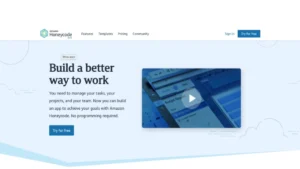
NoCode Tool: Amazon Honeycode

Educational Resources In NoCode
Explore related posts
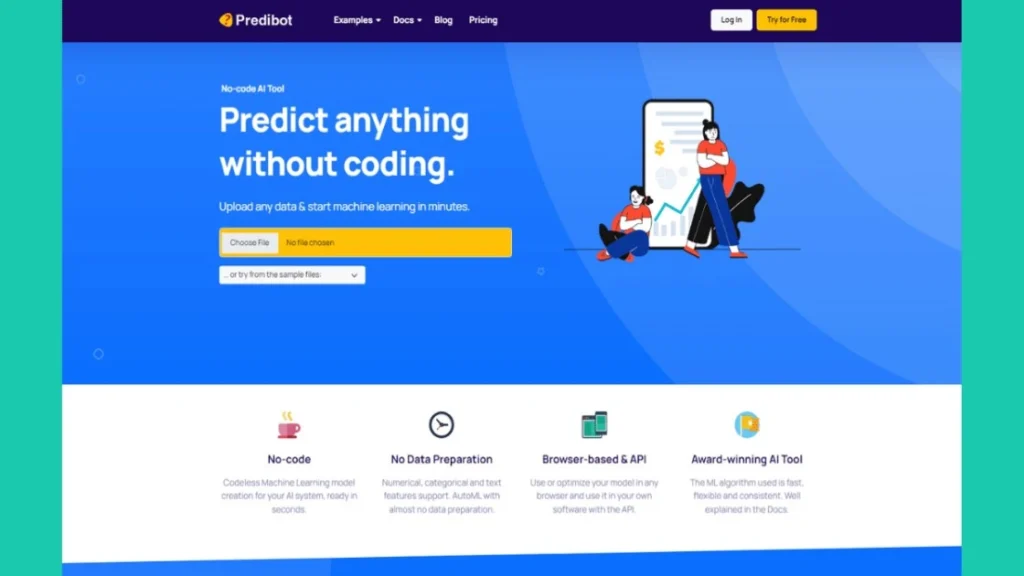
NoCode Tool: Predibot
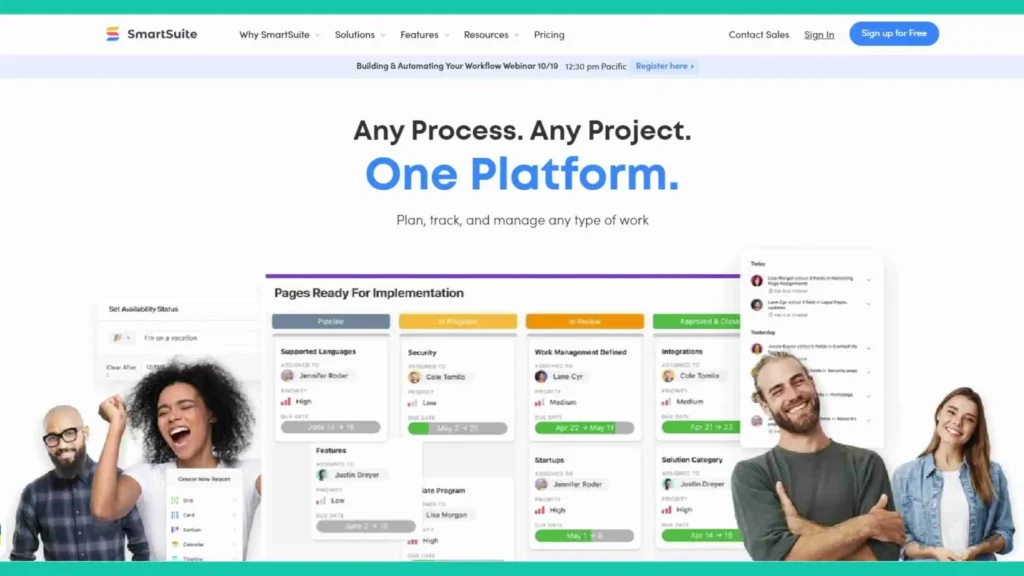
NoCode Tool: Smartsuite

NoCode Tool: Amazon Honeycode







